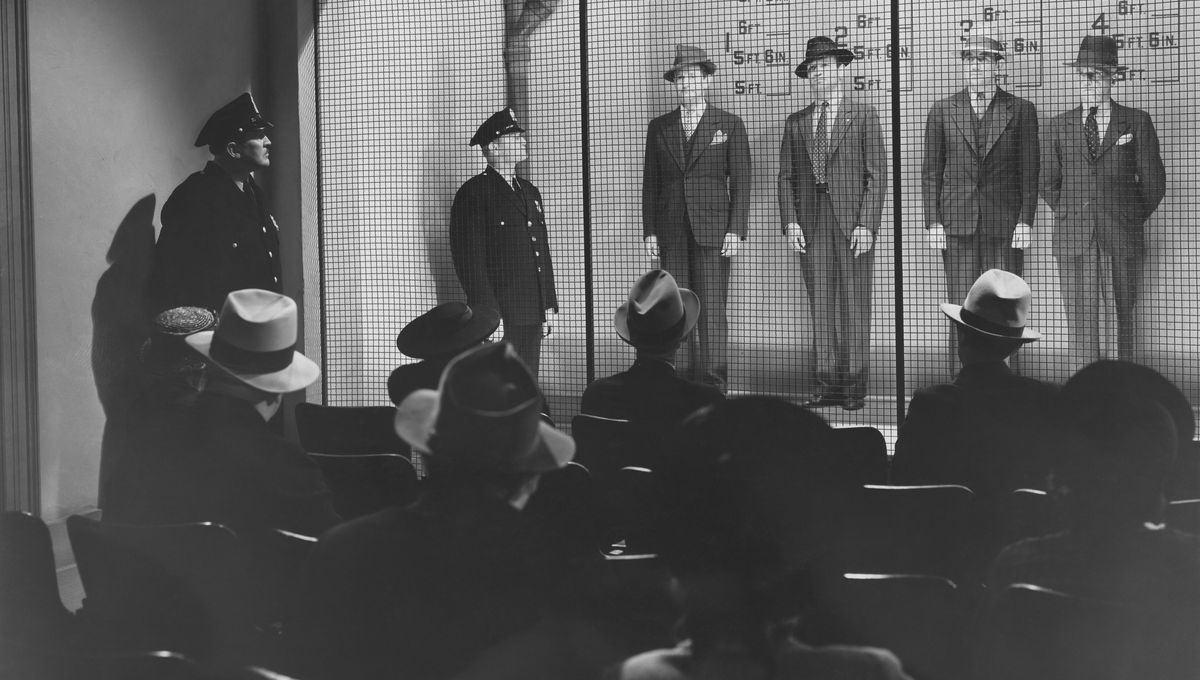
We’ve all seen it in movies and on TV. The witness watches from behind a two-way mirror while a line of potential perps files into a room. They turn to the left, then to the right, and maybe one or two of them step forward for a closer look. Then the million-dollar question: are any of these the person the police are looking for? But what happens if you just can’t be sure?
Although eyewitness testimonies can be key pieces of evidence for law enforcement building their cases, a witness can sometimes pick the wrong person, with potentially devastating consequences. Because of the high stakes, there’s an urgent need for scientists to try and figure out what factors can make it more difficult for a witness to make a positive – and correct – identification.
“We have clear information from the Innocence Project in the US and other cases around the globe, that of the people who have been convicted and later found to be innocent, approximately 70 percent have been imprisoned, at least partly, due to misidentification,” explained study lead Thomas Nyman, an assistant professor at New York University Shanghai, in a statement.
Previous research has focused a lot on how police can best conduct lineups to give a witness the greatest possible chance of correctly recognizing their perp, but Nyman’s study went back a little further, looking at the effect of different variables at the actual time the witness observes the person committing the crime.
“No earlier research has investigated the combined effects of increased distance, decreased lighting, and facial masking on eyewitness identification accuracy using live mock criminals,” Nyman told PsyPost.
The team recruited 1,325 participants during visits to the Heureka Science Centre in Finland, who observed mock criminals from different distances and in different lighting conditions. The “criminals” also took different steps to obscure their faces, such as wearing a hood or sunglasses. After 20 seconds of observation, the volunteers were asked to identify their “criminal” from an eight-person lineup.
As the statement explains, the number of participants makes this one of the largest live studies ever conducted. Although the study was designed like a game to attract as broad a range of people as possible to take part, the team tried, as best they could, to recapitulate a real-world scenario for an eyewitness to a crime.
“A lot of [the design] had to do with what are real-life settings like. What do criminals actually do?” said Nyman. “If it’s worse lighting you might think now is an optimal time to go out and commit a crime, because no one is going to see you.”
The factor that had the biggest effect, the results showed, was distance – it was much more difficult to make a positive identification when the “criminal” had been observed from the furthest distance of 20 meters (66 feet). Sunglasses also hampered the witnesses’ ability to ID their suspect, but surprisingly, using a hood to hide their face did not make much of a difference.
With no facial masking in place, witnesses could identify a suspect observed from 5 meters (16 feet) away with 69 percent accuracy, dropping to just 17 percent at 20 meters. When sunglasses were worn in daylight, accuracy at 5 meters plummeted to 32 percent. When sunglasses were worn in twilight, accuracy at 5 meters was roughly the same at 33 percent, but at 20 meters it tanked to only 8 percent.
While not an exact replica of a real-life crime scenario – for one thing, the witnesses knew that they were going to be asked to ID the suspect later, which rarely happens in the real world – the study does raise some important questions for researchers to explore further.
“One thing I would like to see is a systematic investigation into how often these factors (e.g., increased distance, decreased lighting, various facial masking) are present in real-life criminal events,” Nyman told PsyPost.
Summarizing the findings in the statement, Nyman concluded, “If you can exclude unreliable identifications, it would mean that fewer innocent people will go to prison. And that’s what this whole project is about: trying to protect people.”
The study is published in the journal Psychology, Crime & Law.
Source Link: Why Is It So Difficult For Witnesses To Positively Identify Criminals?